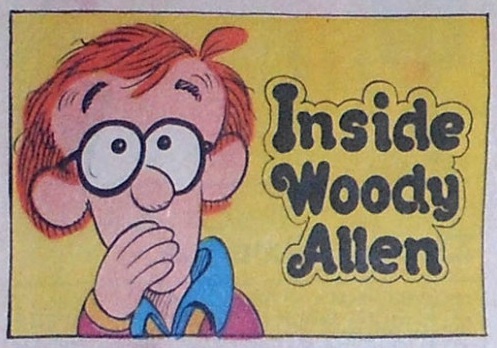In 1976, artist Stuart Hample launched the Inside Woody Allen comic strip and it ran for eight years, until 1984. Hample had much guidance from Woody Allen himself, who provided character insight as well as notes for jokes and comedic ideas.
In 1978 a strip collection book, Non-Being and Somethingness, was published. In 2009, another collection entitled Dread and Superficiality: Woody Allen as Comic Strip was released. Inside the book, Hample talks about the creation of the strip and the extent to which Allen provided feedback. Here’s a snippet:
“Woody always envisaged I’d give him a wisecracking, zeitgeisty cartoon that would deal with relationships, politics, social commentary. He wanted his strip to be amusing but also intelligent. But the anxious syndicate honchos demanded more gags and subjects accessible to the largest possible readership. Woody’s response was that an artist has to follow his own intuition, rather than obey some huckster driven by readership surveys.
This is borne out by my notes from a meeting with Woody, during which he said: ‘We will gain more than we will lose by establishing an identity; my tendency would be to risk being more offensive. I always believe that if I love a thing, 90% of the time there will be some people out there who also like it.’
Woody’s scribblings to me on the strips I sent for his approval offered suggestions: ‘The key is developing people. They must have desires – goals – so we are interested in them. I still feel you must be daring. The strip can probably exist on the level of ‘cute’ little jokes each day, but if you really want to involve the readers, it needs more substance – more plot.’
Another Woody reminder: ‘We need more strips I’m not in. My folks. My lovers.’ And another: ‘We must not just use jokes that exploit my image – jokes should have genuine insights. Don’t pander. Don’t be afraid to be far out. Lead your audience; don’t look to them to lead you.'”
Hop here for more from Hample and Allen at The Guardian and here for a batch of original strips.
Inside Woody Allen Wiki




